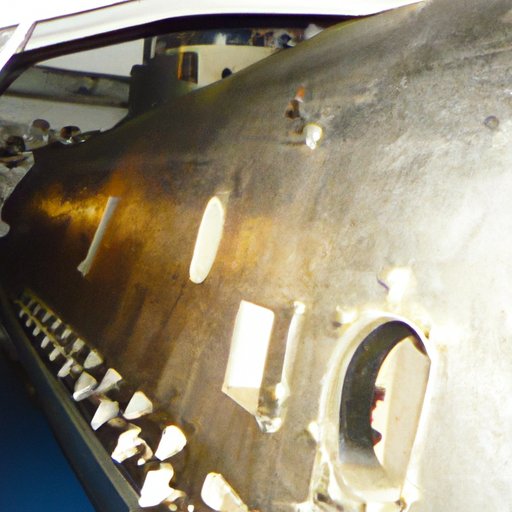Introduction
A submarine is a type of vessel that is designed to operate underwater. It is used for a variety of purposes, including research, exploration, military operations, and recreational activities. The word “submarine” comes from the Latin words “sub” (under) and “marinus” (sea).
Submarines are equipped with a range of sophisticated systems and equipment that enable them to navigate and operate in deep water. The purpose of this article is to explore the inner mechanics of a submarine and to provide an overview of the components that make it work.
A Step-by-Step Guide to How Submarines Work
The first step in understanding how a submarine works is to explore the inner mechanics of the vessel. A submarine consists of several key components, including the hull, the pressure hull, the ballast tanks, the propulsion system, and the control system. Each of these components plays an important role in the operation of the submarine.
The hull of a submarine is the outermost layer of the vessel. It is designed to protect the pressure hull and other components from the pressure of the surrounding water. The pressure hull is the innermost layer of the submarine, and it is designed to withstand the immense pressure of the deep water. The ballast tanks are used to control the buoyancy of the submarine. The propulsion system is responsible for propelling the vessel through the water, and the control system is used to steer the submarine.
In addition to these components, submarines are also equipped with a range of sensors and communication systems that allow them to detect objects in the water and communicate with other vessels. These systems are essential for the safe and effective operation of the submarine.
The Physics Behind Submarine Propulsion
The physics behind submarine propulsion is complex and fascinating. In order to understand how a submarine moves through the water, it is important to understand the laws of physics that apply to submarines. According to Newton’s third law of motion, “For every action there is an equal and opposite reaction.” This means that when a submarine propels itself forward, the water around it will push back against the vessel, creating thrust.
The propulsion system of a submarine is typically powered by electric motors or diesel engines. These engines generate rotational force, which is then converted into thrust by a propeller. The propeller is connected to the engine via a shaft, and as theengine rotates, the propeller spins, pushing the submarine forward.
The amount of thrust generated by the propeller depends on several factors, including the size and shape of the propeller blades, the speed of rotation, and the density of the water. By adjusting these variables, the submarine can move faster or slower, depending on the situation.

An Overview of the Components that Make Up a Submarine
Submarines come in many shapes and sizes, depending on their purpose and design. The most common types of submarines include ballistic missile submarines, attack submarines, and cruise missile submarines. Each of these submarines has its own unique set of systems and components.
Ballistic missile submarines are equipped with long-range missiles and advanced targeting systems. Attack submarines are designed for stealth and have a wide range of weapons and sensors. Cruise missile submarines are equipped with cruise missiles and other weapons for attacking surface ships. All submarines are equipped with navigational systems, communication systems, sonar systems, and other systems that enable them to operate safely and effectively underwater.

The History and Evolution of Submarines
Submarines have been around for centuries, but they were not used for military purposes until the 20th century. During World War I, submarines were used extensively by both sides in the conflict. Over the years, advances in technology have made submarines more effective and powerful. Today, modern submarines are equipped with sophisticated systems and weapons that enable them to carry out a wide range of missions.
Submarines have also become much deeper diving vessels over the years. The deepest known submarine dive was recorded in 2019, when a Russian submersible reached a depth of 10,902 meters (35,797 feet). This is a testament to the advances in technology that have enabled submarines to explore the depths of the ocean.
Conclusion
Submarines are complex vessels that require a great deal of knowledge and skill to operate. This article has provided an overview of how a submarine works, from the inner mechanics to the physics behind its propulsion. It has also explored the various components that make up a submarine and examined the history and evolution of submersible vessels.
We hope that this article has given you a better understanding of how submarines work and encouraged you to explore the subject further. From exploring the depths of the ocean to carrying out covert military operations, submarines play an important role in our lives.
(Note: Is this article not meeting your expectations? Do you have knowledge or insights to share? Unlock new opportunities and expand your reach by joining our authors team. Click Registration to join us and share your expertise with our readers.)
